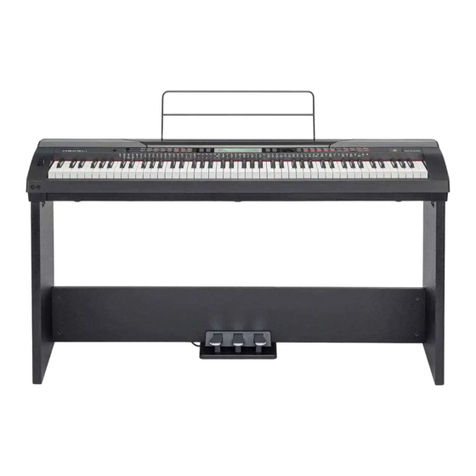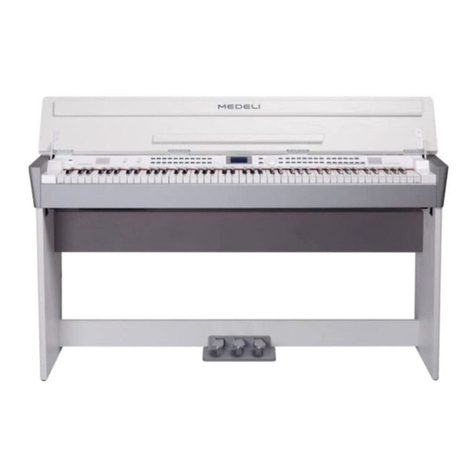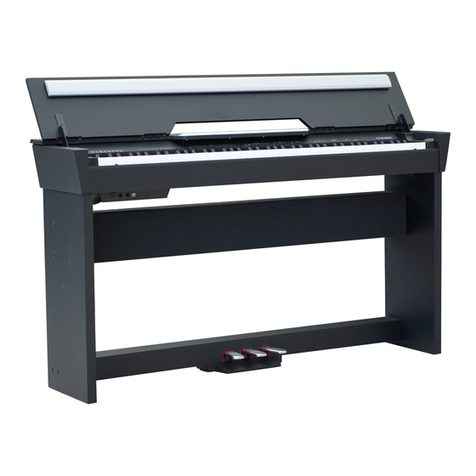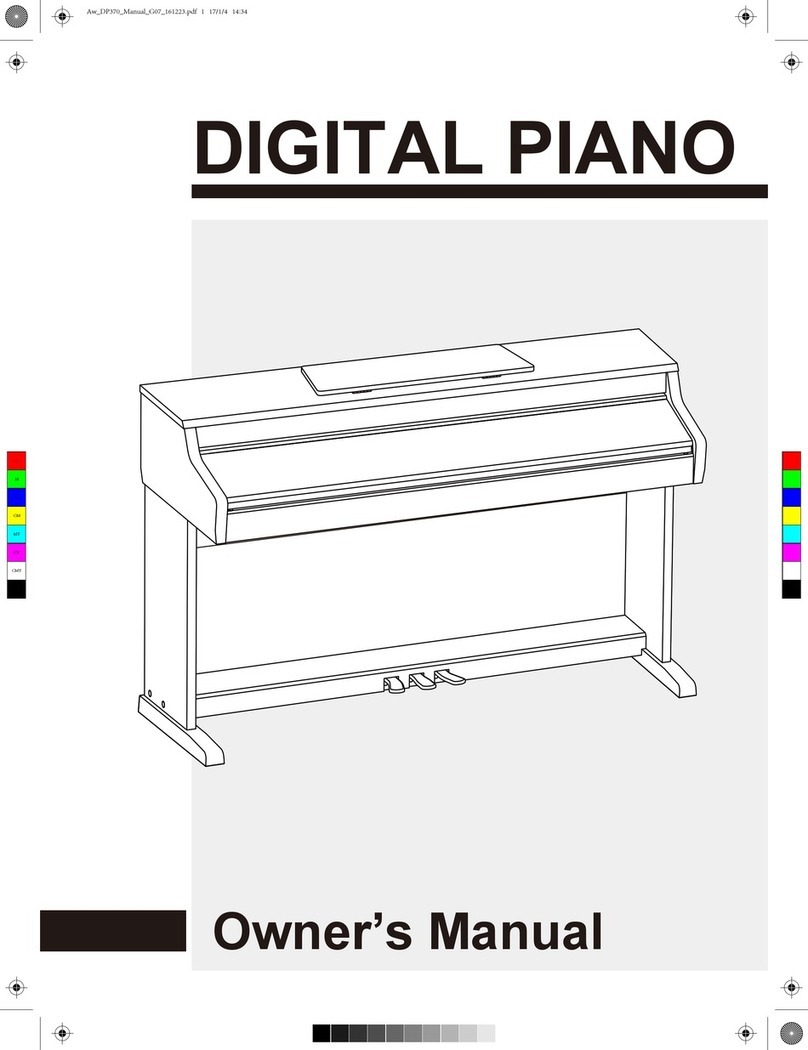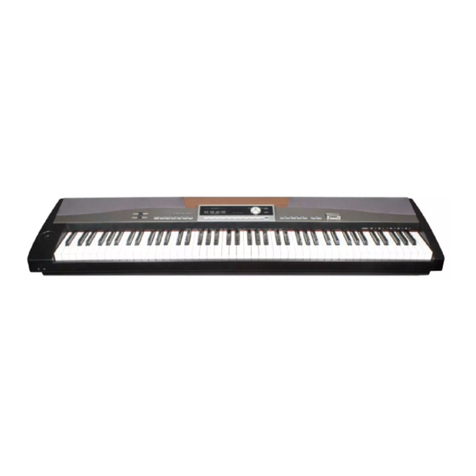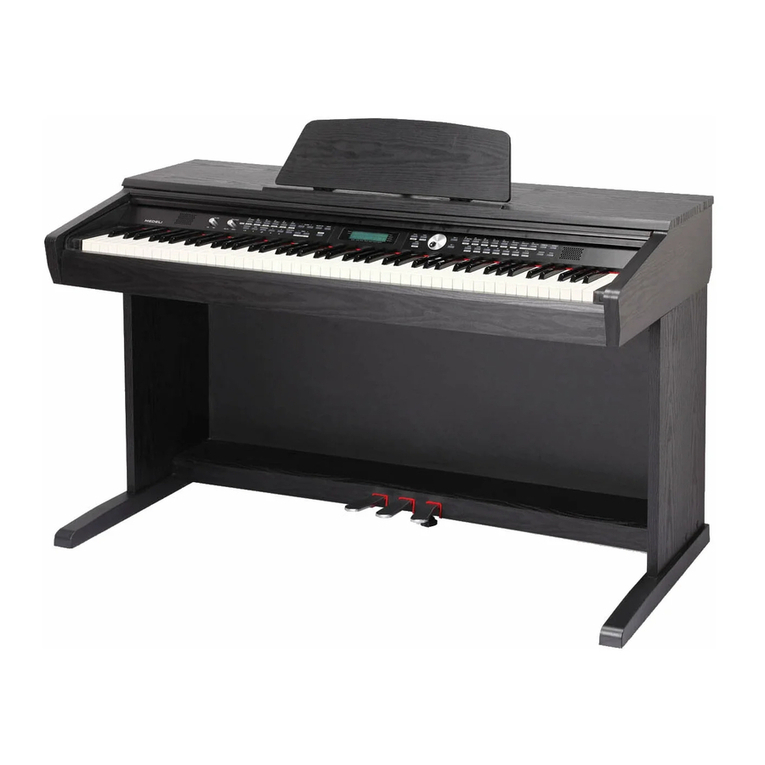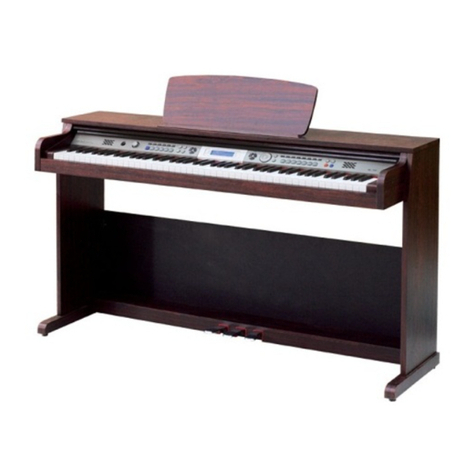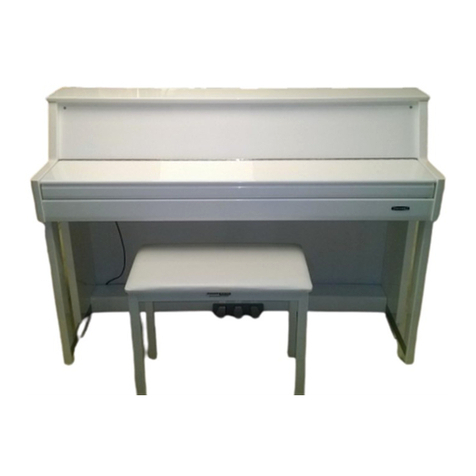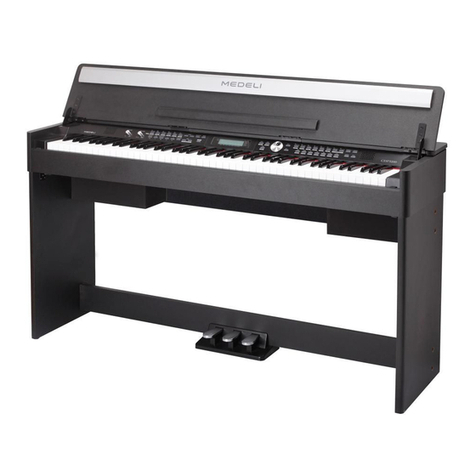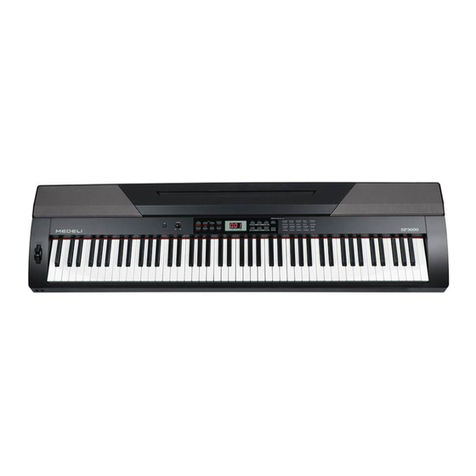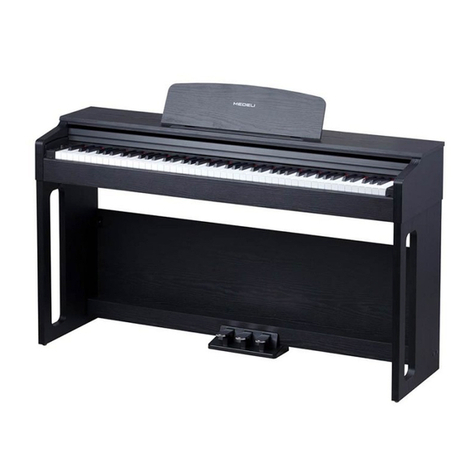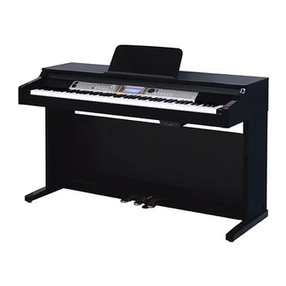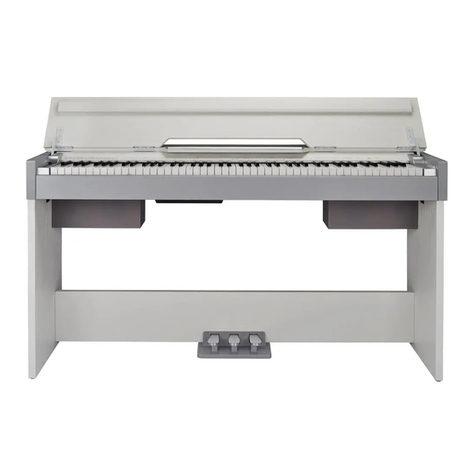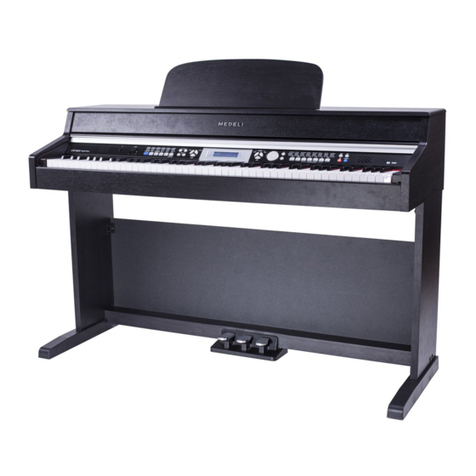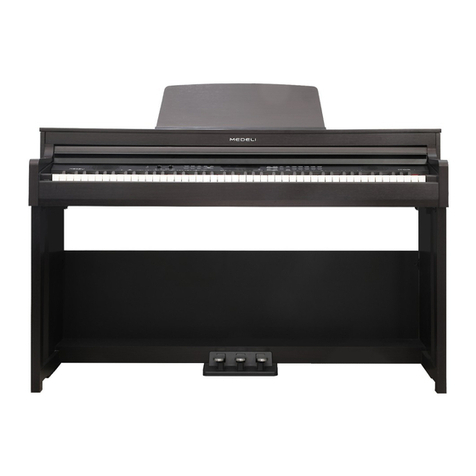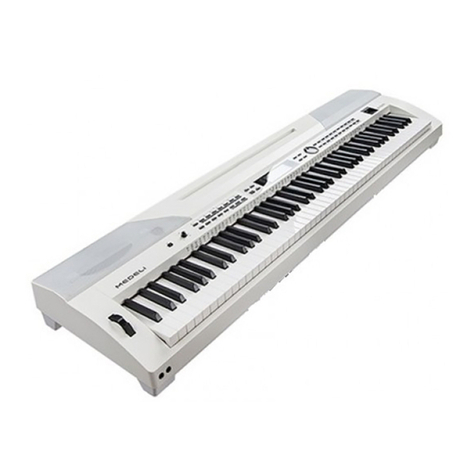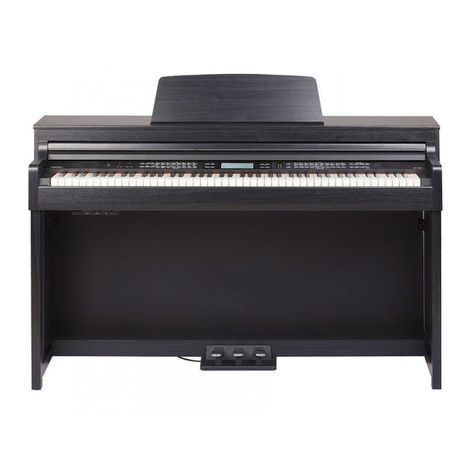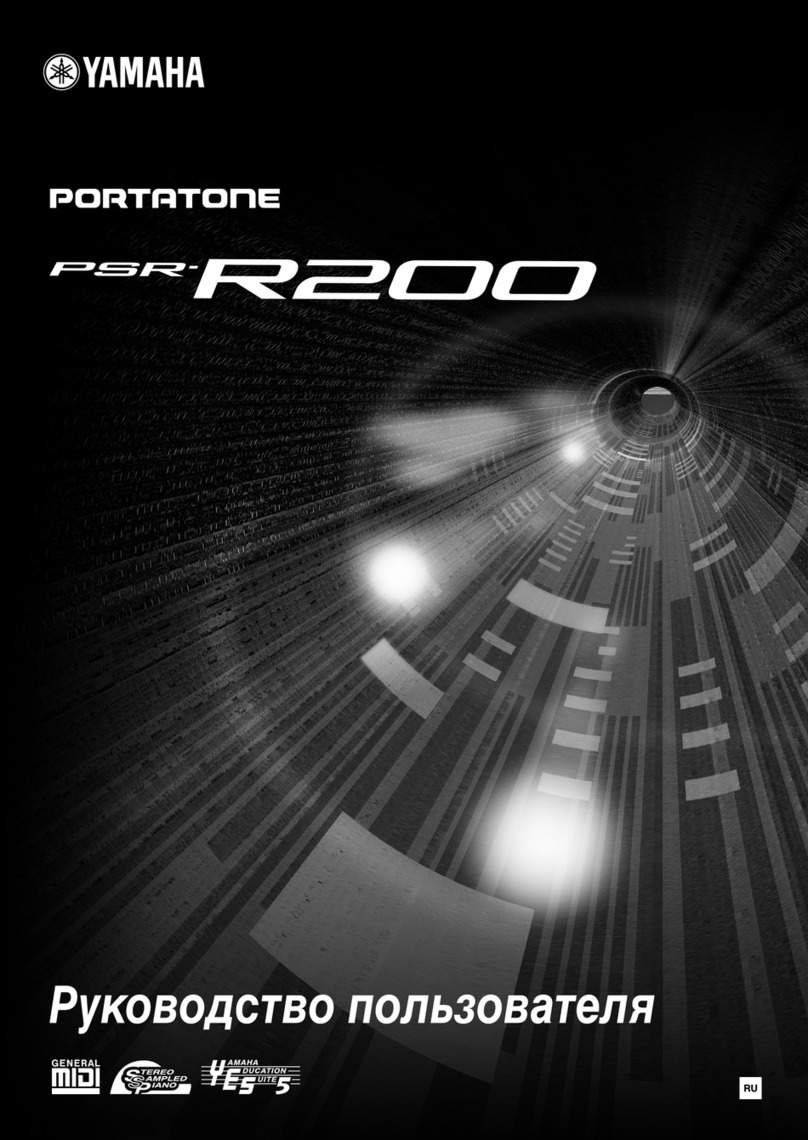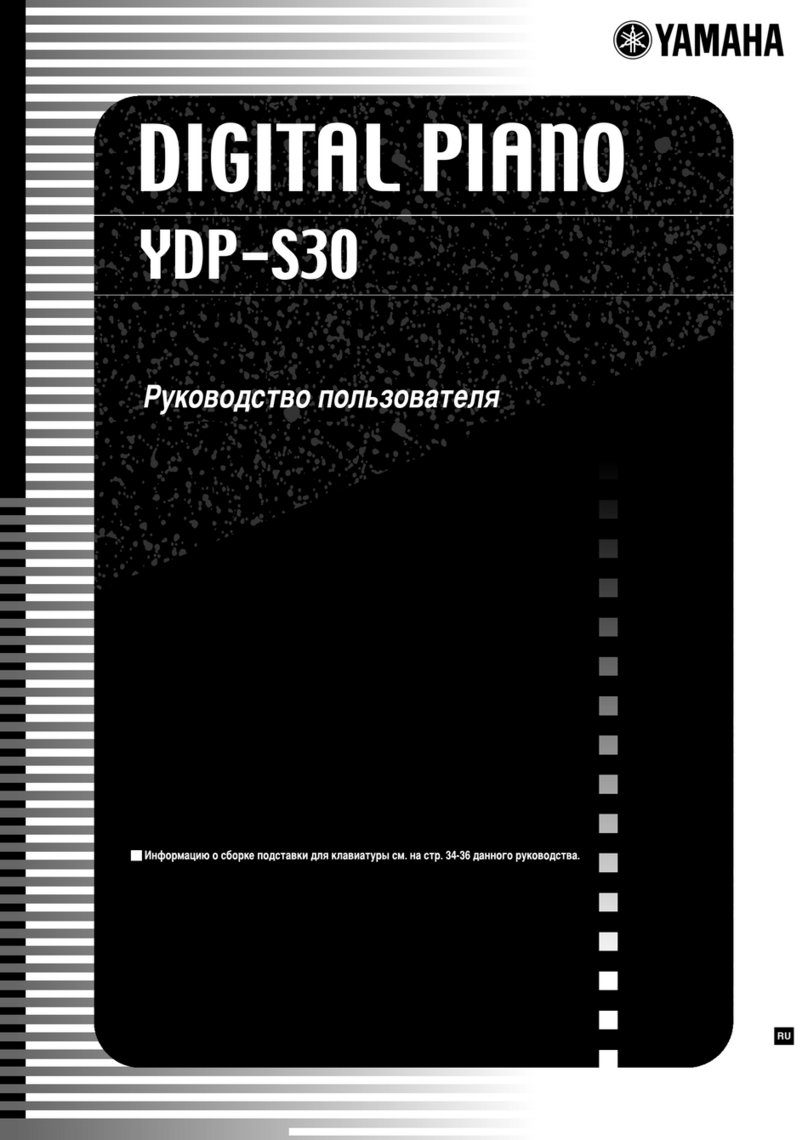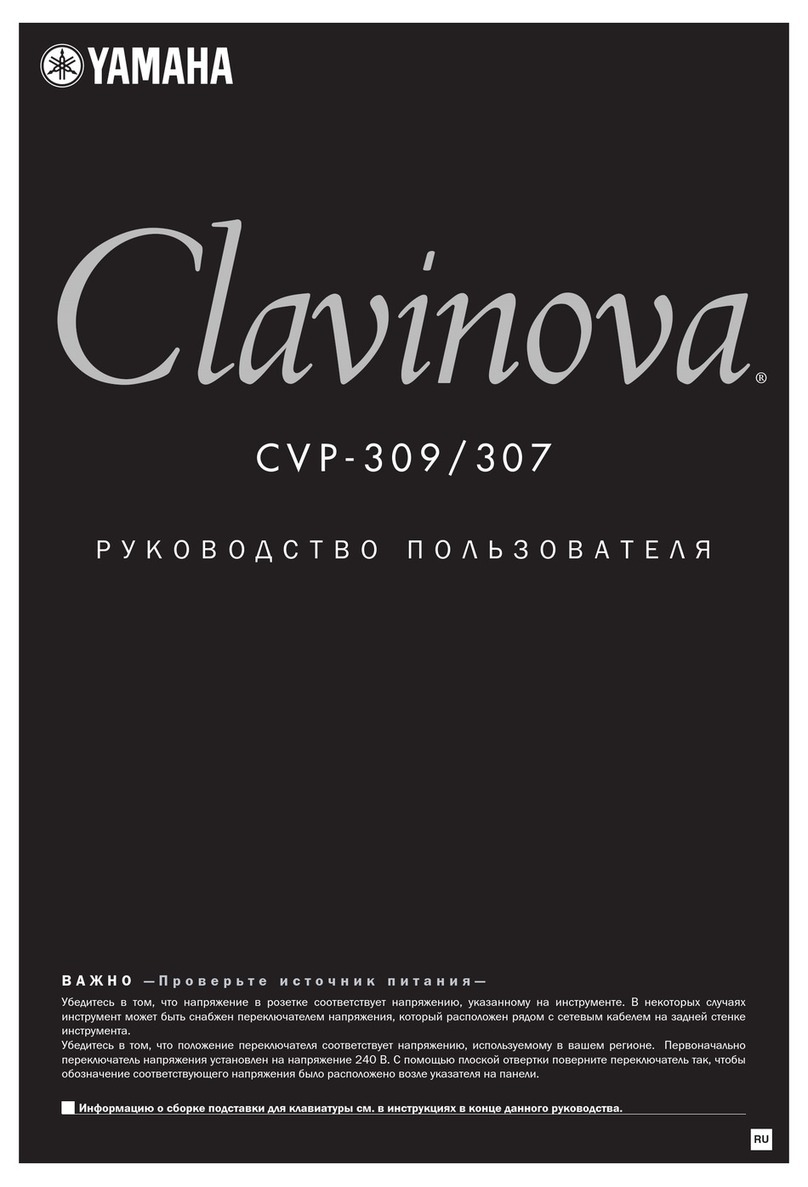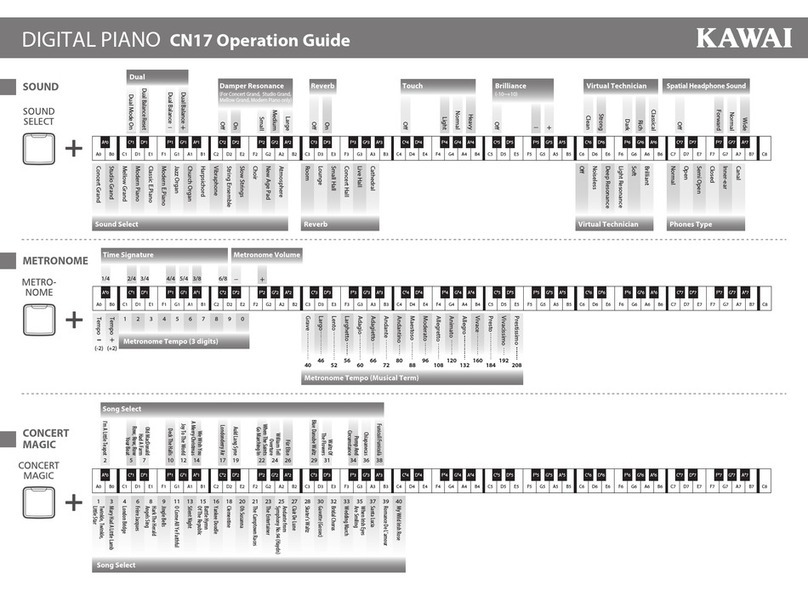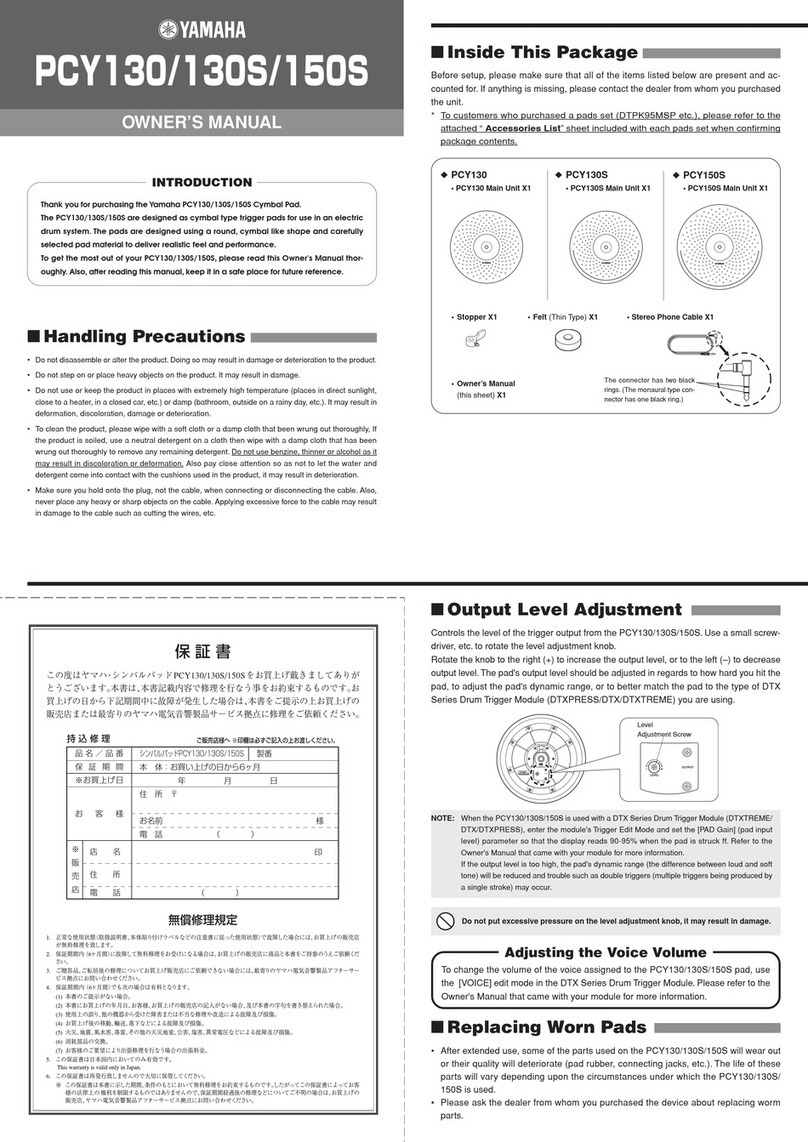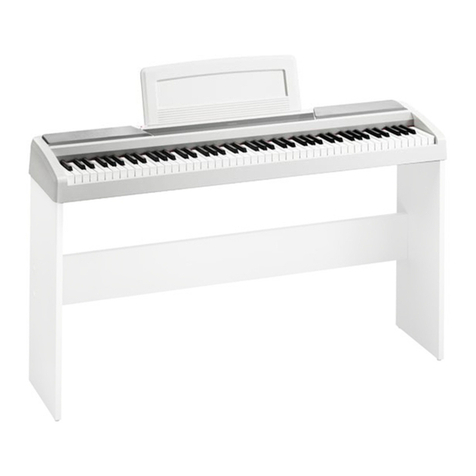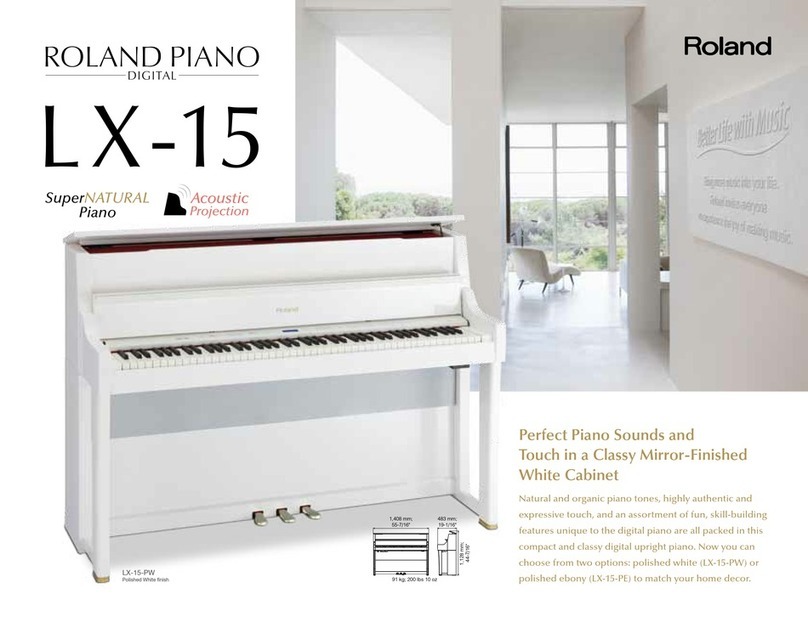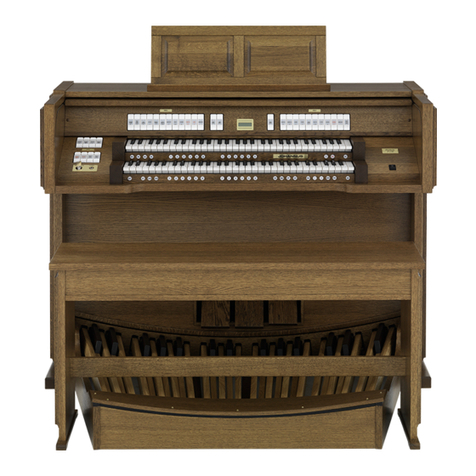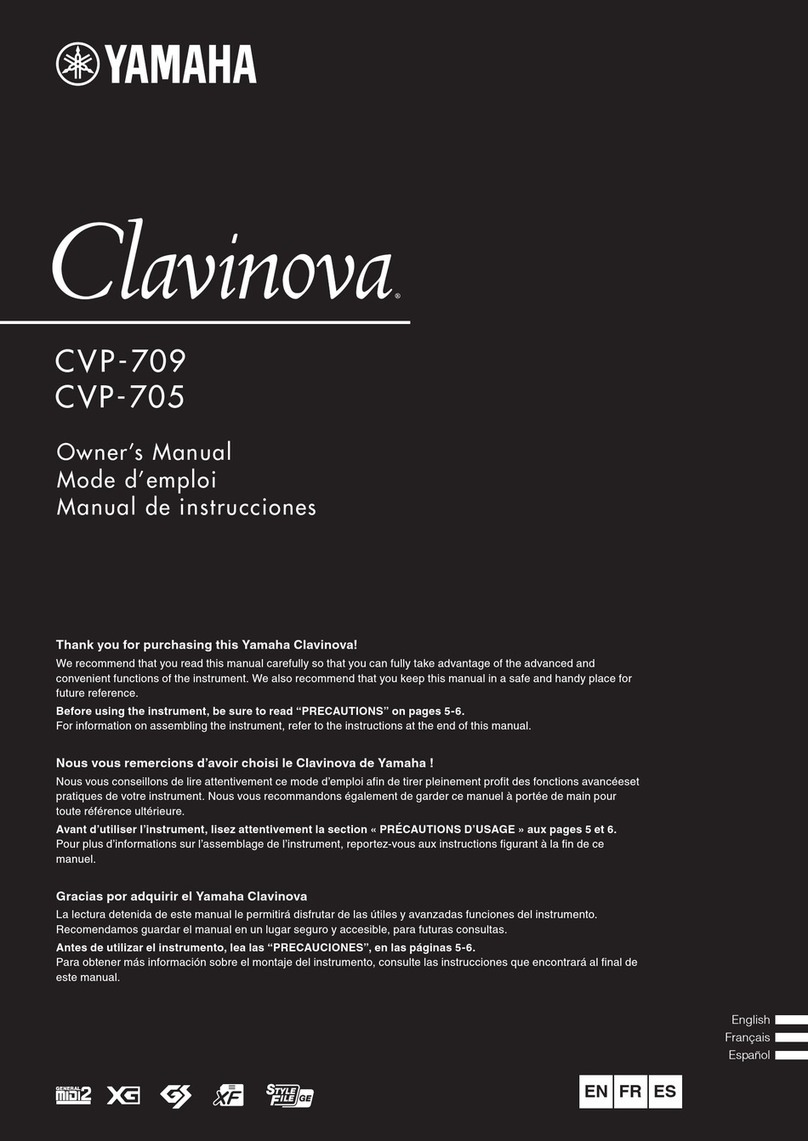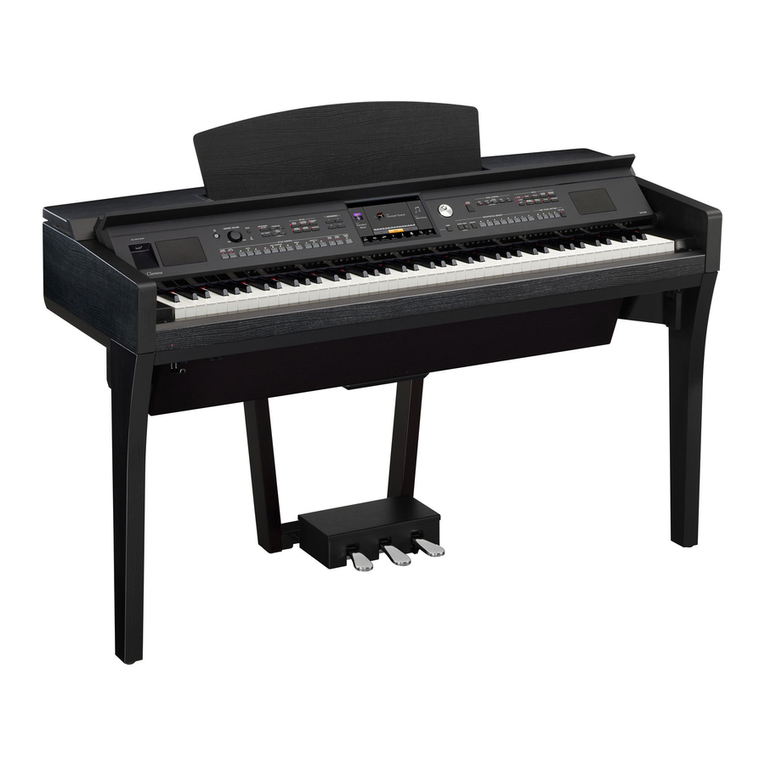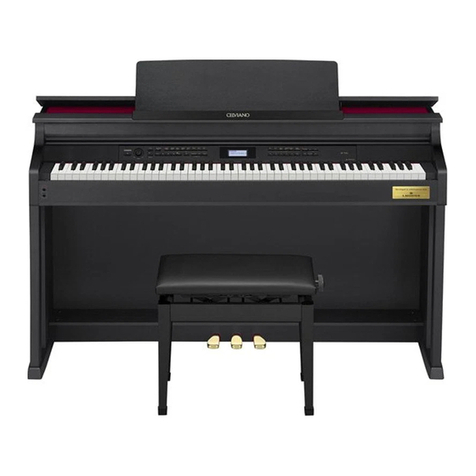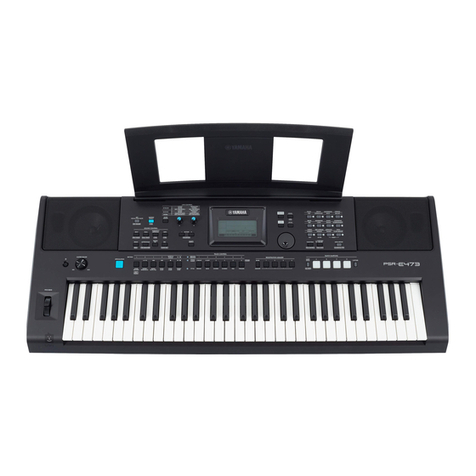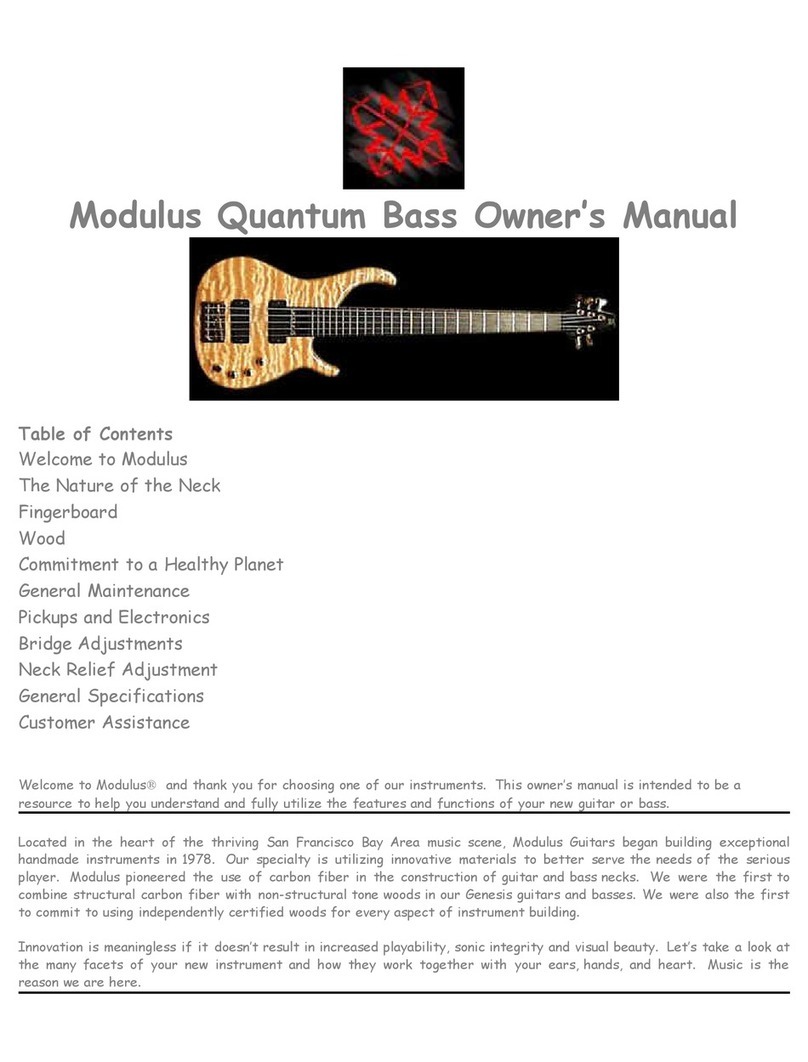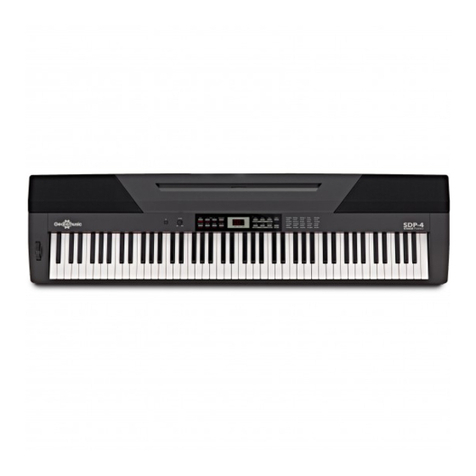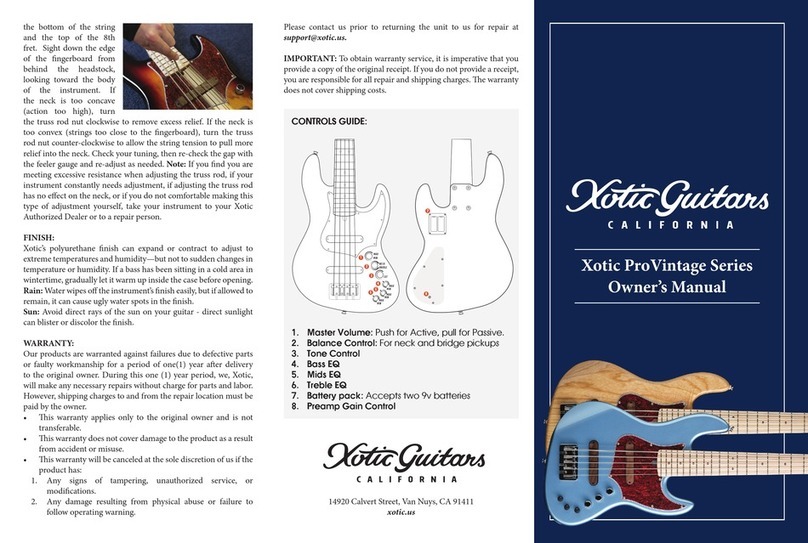Contents
3
Panel & Display Description
Front Pane ..................................................................4
LCD.............................................................................4
Rear Panel..................................................................5
Pedal...........................................................................5
Setup
Setup Guide................................................................6
Power Supply..............................................................8
Connections
Connecting a pair of Headphones...............................9
Connecting an Audio Equipment.................................9
Connecting an MP3/CD Player...................................9
Connecting a Computer..............................................9
Adjusting the Master Volume.................................10
Adjusting the Voice Brilliance................................10
Playing the Demo Song..........................................10
Playing Voices
Playing Voices...........................................................11
Playing two voices simultaneously-DUAL.................11
Playing Different Voices with Both hands-LOWER....11
Touch.........................................................................12
Transpose..................................................................12
Piano mode...............................................................13
Metronome................................................................13
Twinova.....................................................................13
Scale.........................................................................14
Auto Accompaniment
Play Auto Accompaniment (rhythm track only)..........15
Play Auto Accompaniment (all tracks).......................15
Accompaniment Sections..........................................15
Playing Different Accompaniment Sections...............16
Accompaniment Volume............................................17
Chord Fingering.........................................................17
Tempo........................................................................18
One Touch Setting.....................................................18
Harmony
Harmony Switch........................................................19
Play with harmony effect...........................................19
Performance Assistant
What's the performance assistant?...........................20
Enter the Performance Assistant...............................20
Guitar Mode...............................................................20
Playing in Guitar Mode..............................................21
Piano Mode...............................................................21
Playing in Piano Mode...............................................21
Exit the Performance Assistant.................................21
DSP Effect................................................................22
l
Mixer 22
Pedal Function.........................................................23
Function Menu
Tune..........................................................................24
KeySplit.....................................................................24
Beat Type..................................................................25
Metro Volume............................................................25
Pedal Type................................................................25
Reverb Volume..........................................................25
Chorus Volume..........................................................26
Harmony Type...........................................................26
Harmony Speed........................................................26
MIDI In.......................................................................27
MIDI OUT..................................................................27
PowerOff...................................................................27
Performance Beat Type.............................................27
Restore Factory Setting..........................................28
Register Memory
Registering the Panel Setting....................................29
Recalling the Registered Panel Settings...................29
Selecting a Registration Bank...................................29
Accompaniment Freeze............................................29
Song Album.............................................................30
Song Recording
Start Recording.........................................................31
Stop Recording..........................................................32
Playback Recording..................................................32
Delete User Song......................................................32
Song
Listen to the songs....................................................33
Song Control.............................................................33
Practice Song ...........................................................33
MIDI
What's MIDI?.............................................................34
Upload/Download Data from the Computer..............34
Troubleshooting......................................................35
Specifications..........................................................35
Appendices
Voice List...................................................................36
Style List....................................................................41
Song List...................................................................43
Album List..................................................................43
Chord List..................................................................45
MIDI Implementation Chart.......................................46
.................................................47
.........................................................................
Scale Tuning System


